Arctic climate change update 2019
New observations confirm continued rapid warming in the Arctic, driving many of the changes underway in the region, including loss of sea ice and glacier coverage, as well as changes in terrestrial and
New observations confirm continued rapid warming in the Arctic, driving many of the changes underway in the region, including loss of sea ice and glacier coverage, as well as changes in terrestrial and

As the world grapples with the challenge of climate change, a top Indian scientist has called for the opening of more Indian research stations in the Arctic. "India's observer status in the Arctic Council
<p>Significant salinity anomalies have been observed in the Arctic Ocean surface layer during the last decade. Our study is based on an extensive gridded dataset of winter salinity in the upper 50 m layer
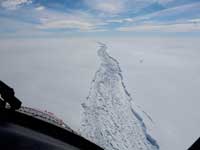
OSLO: A freak warming around the North Pole is sending a blast of Arctic cold over Europe in a sign of "wacky" weather that may happen more often with man-made global warming, scientists said on Monday.
<p>Present-day mass redistribution increases the total ocean mass and, on average, causes the ocean bottom to subside elastically. Therefore, barystatic sea level rise is larger than the resulting global
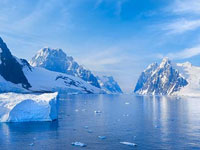
Melting Arctic sea ice could render sun-soaked California vulnerable to a recurrence of the severe drought suffered in recent years as it is likely to cause high pressure systems that push away rain-bearing
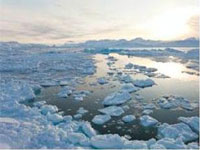
The Arctic is warming about twice as fast as other parts of the planet, and even here in sub-Arctic Alaska the rate of warming is high. Sea ice and wildlife habitat are disappearing; higher sea levels
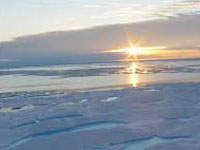
Alaska: A federal research vessel will launch on a cruise this week to study how Beaufort Sea wind affects plant and animal life in a changing Arctic Ocean. The Sikuliaq (see-KOO'-lee-ak), owned by
<p>Ice-albedo feedback due to the albedo contrast between water and ice is a major factor in seasonal sea ice retreat, and has received increasing attention with the Arctic Ocean shifting to a seasonal
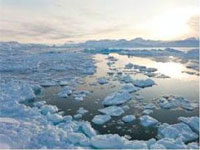
Natural swings in the Arctic climate have caused up to half the precipitous losses of sea ice around the North Pole in recent decades, with the rest driven by man-made global warming, scientists said